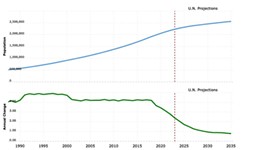Fast Track
CAMPO Gives Its Blessing To Cap Metro Light Rail Plans
By Mike Clark-Madison, Fri., Nov. 12, 1999

It wasn't exactly a crossroads, but Capital Metro did make it through a rough patch of road, or rail, on Monday night, as the Capital Area Metropolitan Planning Organization (CAMPO) voted to support the transit authority's application for federal light-rail funds. A little background on this often-Byzantine process: Pursuant to federal law, each U.S. metropolitan area has a designated Metropolitan Planning Organization (MPO), which every five years produces a long-range (25-year) transportation plan for the area and authorizes the spending of federal transportation dollars (which is where the real money comes from) on specific road or transit infrastructure projects. In some other places, the MPO duties are performed by a broader regional agency, such as a council of government, with interests that go beyond transportation. This has thus far not been true in Austin, where until last year CAMPO was known as the Austin Transportation Study.
The big difference in Austin is that the board of the MPO -- the CAMPO Policy Advisory Committee -- consists of actual elected officials at the municipal, county, and state levels who take their CAMPO duties quite seriously. Chaired by state Sen. Gonzalo Barrientos, the CAMPO board includes four Austin City Council members, three Travis County commissioners, all eight members of Metro Austin's legislative delegation, the mayors of Cedar Park and Round Rock, and one county commissioner each from Williamson and Hays counties, plus our Texas Department of Transportation district engineer and a member of the Capital Metro board.
These two facts -- that the MPO is, despite the name, not a full-service planning group, and that it's highly politicized -- are essential to understanding why it's not a routine matter for Capital Metro to secure CAMPO's blessing. It was, after all, CAMPO board members who, in the last two Legislatures, fired the old Cap Met board; enabled and, sotto voce, forced the agency to take its light-rail plans to the voters next year; and laid the groundwork for raiding Cap Met's sales-tax collections for road projects, should the voters nix rail transit.
Much Ado About Nothing
Given all that, the discussion at CAMPO's Nov. 8 board meeting was more muted than you might expect. It helped that Cap Metro was only asking for permission to submit a request for federal funding for its "locally preferred alternative," or LPA -- a starter line from McNeil Road south to downtown, with as-yet-undefined extensions to the south and east -- and not seeking carte blanche to build the system. And it helped that Austin's current long-range plan, adopted by the then-ATS in 1995, calls for 54 miles of rail transit, including all the corridors in Cap Met's LPA.
It also helped that ultimately, you and I, not CAMPO, will get to make that decision. "This is not decision time on Capital Metro; that comes when the voters decide," said Round Rock Rep. Mike Krusee. "We're not endorsing spending $1 billion on a specific route. If we were, I would probably vote no." But we knew that already; it was Krusee who, in the last Lege, floated a bill that would redirect Cap Met tax money for road projects, which is the real objective of most of the organized opponents of light rail.

But that did not mean that light-rail partisans, pro and con, missed the opportunity to have their say about the boon and bane of the train. The citizen side of the meeting was dominated by a palette of business 'n' industry types, organized by the Capital Area Transportation Coalition and including all the local chambers of commerce, which are calling for CAMPO to endorse Cap Met only if it also endorses the chambers' pet highway projects, most famously SH 130. These were the people who packed the room wearing bright yellow "No Gridlock" stickers. At least they were honest; one speaker, identifying himself only as a concerned citizen, blistered Cap Met and light rail, but later, when pumping for SH 130, identified himself as a representative of the trucking industry. Uh-huh.
The de facto opposite side, wearing green "Light Rail Now!" badges, included Cap Met GM Karen Rae, who ran through her where-we-are-now-with-rail presentation for what must be the 20th time, again reminding everyone that most of the important decisions about rail -- like whether we'll have it at all, and where exactly it will go, and what it will look like, and what will get built around it -- are still pending.
The urgency now is to simply remain eligible for federal "new starts" funding for transit projects, which the agency expects to cover half of the LPA's nearly $1 billion price tag. The devilish details of the light rail alignment, technology, station locations, and such need to be worked out in the upcoming PE/EIS (preliminary engineering/environmental impact study), again as required by federal law of all transportation projects, road or rail. (In case you're keeping score, even with all the studies of light rail that have been done, this will be the first formal EIS.)
Even though the $3 million or so to pay for this study is already earmarked from federal and Cap Met funds, Travis County Commissioner Todd Baxter -- the designated voice of the anti's at the CAMPO meeting -- questioned whether the board "should be voting to support spending any money on a project that may not go forward. -- What would happen if we go to the voters and they say no?" To which Rae responded: "Commissioner, there is always a risk involved in planning transportation projects; we think there's enough support for light rail to move ahead and get the answers the community wants."
Blaming the Messenger
Other than Baxter, who voted with Austin Rep. Terry Keel not to let Cap Met go forward with its federal funds application, the only other vocal objection was from Round Rock Mayor Bob Stluka, who abstained, decrying the absence of a "regional approach," whatever that means. "What's proposed here doesn't go far enough," he said. "To be truly regional, it needs to take a broader look." Round Rock, of course, is not part of the Cap Met tax-and-service area, even though the extension of the LPA north to McNeil Road, within yards of the Round Rock city limit, means that lots of Rockers would be riding the train without paying the sales tax back home.
Besides, it is CAMPO's job -- through its long-range regional plan, which will be officially updated in 2000 -- to determine what corridors and communities would be served by rail. Cap Met's current 54-mile scheme is actually downsized from old ATS plans of the 1980s, which called for more than 100 miles of rail, including a line out along what is slated to be SH 130. All Cap Met does is decide when and how within those corridors it aims to fulfill the CAMPO plan, by which it is governed along with every other local jurisdiction. This means that both Round Rock and restive Pflugerville, or anybody else who feels an unmet transit need, bark at the wrong tree when they bark at Cap Met.
This highlights that other pertinent fact about CAMPO -- that it is not what many feel Central Texas really needs, a regional planning organization with input, if not absolute authority (this is Texas, after all), over land-use and infrastructure planning as well as transportation. As Council Member Gus Garcia pointed out, echoing the green-badged contingent of the audience, "If people keep living further and further away, there will be more and more gridlock, no matter how many roads you build. It is enormously important to stop the urban sprawl that's killing our roads, [and] fixed-guideway [i.e., rail] transit allows cities to guide where development occurs."
Of course, any transportation facility will guide where development occurs, which is why folks with an interest in keeping the suburbs viable are so hot and heavy for SH 130 and the Texas Turnpike Authority's other three local toll-road proposals -- the northern extension of MoPac, the U.S. 183-A bypass, and the northwestern section of SH 45, née the Outer Loop. The CAMPO board took public testimony, again mostly in favor, but put off making a decision on formally including these roads in its work program. The biggest of them, SH 130, is going through the same EIS process that Cap Met is about to embark on; that study is supposed to be released in mid-December, at which point the debate over that controversial highway will make little ol' Cap Met the furthest thing from CAMPO's collective mind. ![]()
Got something to say on the subject? Send a letter to the editor.








